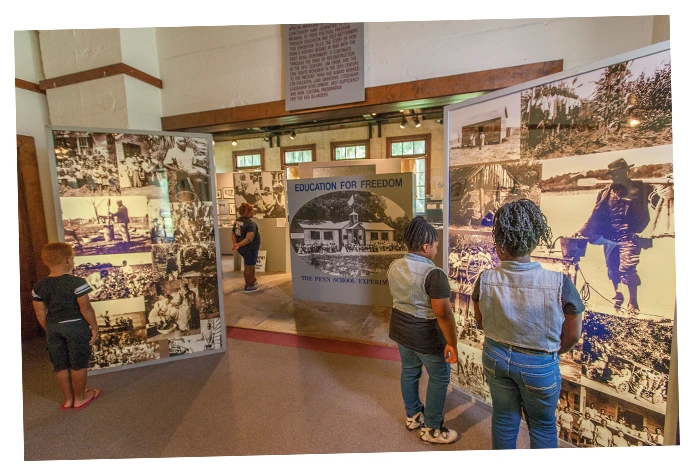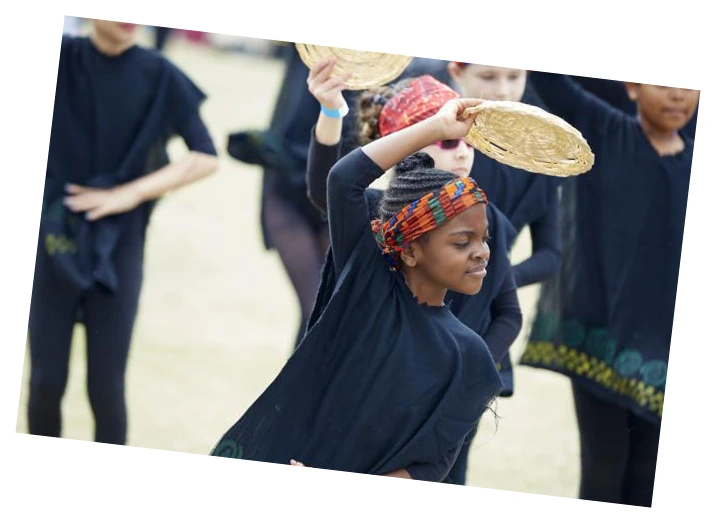- Home
- /
- Media + Gallery
- /
- Lowcountry Stories
- /
- Gullah culture in the Lowcountry
Gullah Culture
in the Lowcountry


Gullah culture in the
South Carolina Lowcountry
The history of the Gullah people in the South Carolina Lowcountry runs as deep as the roots of the mighty live oak tree. The Gullah people – a unique group of African Americans who were enslaved and brought to the area in the late 1600s – have developed a distinct culture, language, cuisine and overall way of living that has helped make the region what it is today.
Their rich heritage began with slave trade during the early development of the United States. Their culture has been shaped by the environments and communities they created. Many of the Gullah people were brought from West Africa, and their language and customs were heavily influenced by their African heritage.
In addition to speaking a creole language that is a combination of English and various African languages, the Gullah people are known for their traditional craftsmanship, including basket weaving. They also developed a unique cuisine that incorporates local seafood, rice, and other ingredients.
The Gullah people have a strong sense of community and are fiercely proud of their heritage. They are well known for their vibrant cultural traditions, including their music, stories, and art. The Gullah people have worked hard to preserve their history and pass it on to future generations. And that is evident to visitors and locals alike.
When you arrive in the Lowcountry, it is obvious that history happened here. The places of struggle and hope that you read about in history books come alive in front of your eyes. From the well-preserved church ruins to the blue bottle trees along the streets, the heritage shines as bright as the famously hot South Carolina sunshine.
The Gullah culture has survived through battles lost and battles won. Through the Revolutionary War and the Civil War. Through Civil Rights struggles and modern-day tribulations. Their heritage has held on with a strong grip that won’t relent.
When you travel to places like Daufuskie Island, it’s like you’re traveling back in time. Once home to freed slaves, the Gullah heritage is preserved through the sandy dirt roads, quaint cottages and shops, museums, and the overall natural beauty.
After the Civil War, plantation owners abandoned Daufuskie Island. Former slaves that returned to the island bought parcels of land and built cottages. They worked in farming, logging and oyster canning. By the mid-1900s, these industries dried up and work had to be sought off the island. Many of their homes fell into disrepair.
Through a grant from Palmetto Trust for Historic Preservation’s “Daufuskie Island Endangered Places Program,” many of these homes and other structures have been restored. This isolated isle is only a short boat ride from Hilton Head and an hour from Savannah, but when you set foot on the shore, you’ll feel like you’re in a different world. Beaufort is another prominent destination for the Gullah culture. After the Civil War, this became the first place in the South where former slaves could begin melding themselves into a newly free America.
Beaufort was home to notable figures such as Robert Smalls, a former slave turned military captain and SC Congressman. At the start of the Civil War, Smalls was an enslaved crew member on a ship called the Planter in the Charleston Harbor. A year after the start of the war, Smalls freed himself and his family, turning the ship over to the US Navy.



Due to his vast knowledge of the Charleston Harbor, he was able to pilot vessels there for the Navy, eventually being promoted to captain. Throughout his military career, Smalls made an effort to return to Beaufort when he could. By January 1864, using prize money from the capture of the Planter, he had purchased the mansion of Henry McKee – the man who had once enslaved him.
His natural leadership ability, war hero status, passion for public education, and political skills eventually landed him the job of Congressman during the Reconstruction era. He then served five terms in the House of Representatives between 1875 – 1887.
In nearby St. Helena Island, the Penn Center opened as the first school created to teach the former slaves how to read, write, and important life skills. This would go on to be an important landmark for African American culture, with Martin Luther King, Jr. spending a lot of time there during the Civil Rights Movement, and even writing some of his speeches at the center. Today, the Penn Campus is part of the National Park’s Service Reconstruction Era National Park.
In Port Royal, you’ll find evidence of the infamous “Port Royal Experiment.” This was a program during the Civil War in which former slaves successfully worked on the land abandoned by planters after the region was captured by Union soldiers.
When the white residents fled Port Royal, they left behind 10,000 slaves. Several private Northern charity organizations stepped in to help the former slaves become self-sufficient. The new residents demonstrated their ability to work the land efficiently and live independently of white control.

Gullah Culture



In a similar situation, Hilton Head Island saw another self-sufficient community of thousands of former slaves called Mitchelville. The town, named posthumously after its founder, General Ormsby Mitchel, had a mayor, councilmen, a treasurer and other officers, who all oversaw every aspect from town disputes to sanitary regulations. Notably, the town established the first compulsory education law in the state, requiring education for every child from the ages of 6-15.
Today, the African American heritage remains strong and celebrated throughout the Lowcountry and the Sea Islands. From former praise houses turned churches and museums to festivals and tours, there is no shortage of opportunities to learn about the Gullah impact on South Carolina. Each February, a month-long celebration brings their culture to life for many to enjoy from far and wide.
The Hilton Head Island Gullah Celebration includes art shows, craft expos, food, film, musicals and more. This festival is even recognized by the Southeast Tourism Society as one of the “Top 20 Events in the Southeast.” Here, visitors have an opportunity to take a journey through the culture via delicious, fresh food, traditional music and art, and storytelling. During the summer, the Original Gullah Festival in Beaufort serves the same purpose – a place for the community to gather and enjoy sounds, sights, smells and tastes of the Gullah heritage.
 Over the years, Gullah culture has attracted historians, linguists, folklorists, and anthropologists alike. Particularly in more recent years, many academic books have been published, shows and documentaries have been made, and the media has shown an increased interest.
Over the years, Gullah culture has attracted historians, linguists, folklorists, and anthropologists alike. Particularly in more recent years, many academic books have been published, shows and documentaries have been made, and the media has shown an increased interest.
The Gullah people have also become a symbol of cultural pride for African Americans throughout the United States, with the culture spreading from rural Southern areas to larger cities – establishing their own neighborhoods and churches in Northern areas such as New York (Harlem, Brooklyn, and Queens).
But nothing tops the rich history that is shown in the Lowcountry. If you’re interested in learning about the Gullah people, we welcome you. Sit back and listen to the stories of struggles and advancements. Hear the music and see the art that helps tell those stories. Never forget what they went through, and how they shaped our communities to what they are today. Help us pass on these stories to keep the heritage alive for years to come.




